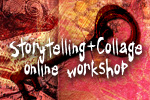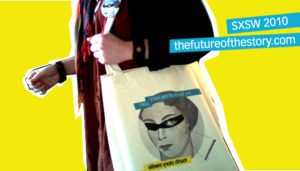Right on the heels of my latest gnashing of teeth over personal branding are two developments on the subject.
The first is a highly retweeted blog post on Web Worker Daily by Georgina Laidlaw on using storytelling techniques in personal branding. In what is expected to be a three-part series on this topic, Laidlaw begins with characterization. Agreeing at least in part with Gareth Jones who says that brands are static but people are not, Laidlaw diverges from Jones’s assertion that people, therefore, cannot be branded.
“You’re the key character in your story,” Laidlaw notes, and as such, you select “crucial defining information about their characters and focuses on communicating that clearly, in a way that suits the character” and hence, build your brand. Among the choices for information you might select about your character, Laidlaw says, are:
- the channels you use
- the language you use
- your profile data
- the photos you publish of yourself and others
- your interests, pastimes, and the topics you focus on, including links and other content you promote
- your frequency and depth of public engagement with others
- the places you like to visit or meet others
In answer to the question, “How do you know what will best illustrate your character to your contacts?”, Laidlaw states that “the answer will depend on your character! I usually only communicate about things that I feel very strongly about — topics I’m passionate about — which in itself reflects my character to some degree.”
The second development is a new (free) product from Penelope Trunk’s Brazen Careerist network, the “social resume .” This product strikes me as a cross between a LinkedIn Profile and a social-media resume. Intended for Gen Y workers, Brazen Careerist resumes do not focus on the “story” metaphor; “story” is never mentioned. Instead, “ideas” is the top buzzword, followed by “conversation.” (John Zappe quotes Trunk: “The recruiting industry is shifting from search ninjas to those who understand conversations.”)
.” This product strikes me as a cross between a LinkedIn Profile and a social-media resume. Intended for Gen Y workers, Brazen Careerist resumes do not focus on the “story” metaphor; “story” is never mentioned. Instead, “ideas” is the top buzzword, followed by “conversation.” (John Zappe quotes Trunk: “The recruiting industry is shifting from search ninjas to those who understand conversations.”)
Still, the Brazen Careerist social resume provides opportunities for storytelling in its “About Me” section, and some of the social resumes I looked at by community members offer stories in that space, such as the one for Brazen Community Manager Ryan Paugh (thumbnail of resume pictured here).
But, ugh, the way Brazen Careerist solicits information for the Experience portion of users’ social resumes is anathema to storytelling; the form asks for a “job description.” I can guarantee that no storytelling will be forthcoming from job descriptions. Brazen should be asking for accomplishments, achievements, initiatives, results, and the like.
Here’s where I see a terrific mashup: Brazen Careerist social-resume users could use Georgina Laidlaw’s personal-branding storytelling techniques for their social resumes.
I keep bringing up new twists on resumes not because they are explicitly storytelling resume but because each new “resume replacement” or “resume reinvention” (as Zappe calls them) suggests that hiring decision-makers are not getting what they need from traditional resumes. With Zappe using phrases like “better portrait” and “living, breathing profile,” I know there is a place for storytelling in these new incarnations.









